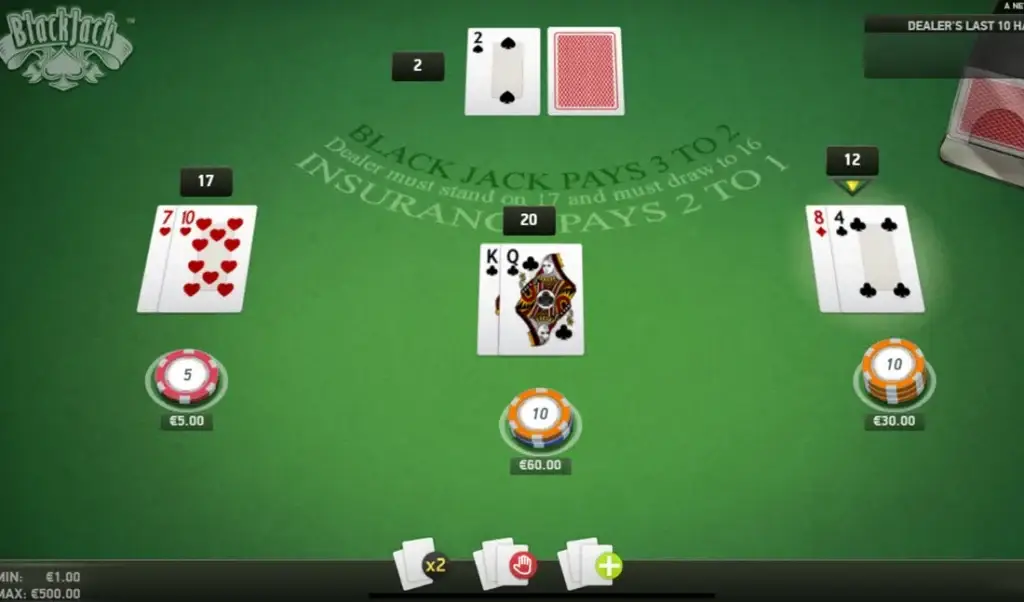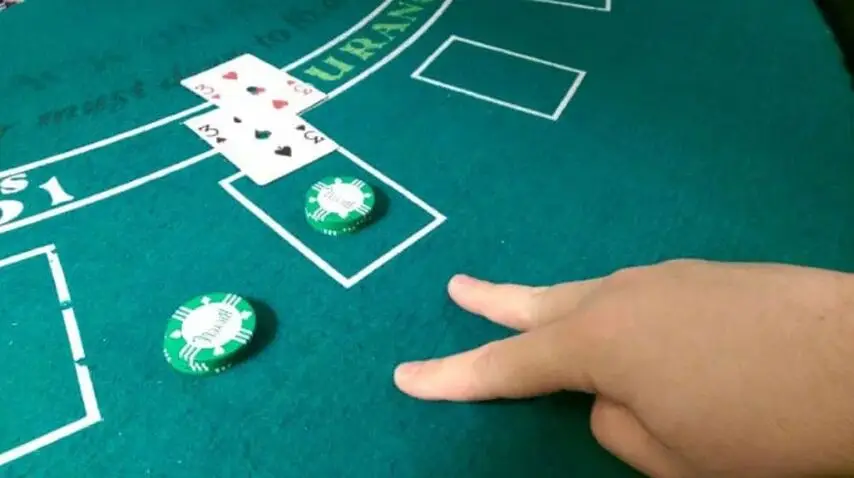Split in blackjack is not just a technical possibility, but a powerful tactical tool. Properly applied, splitting a pair helps to reduce losses, strengthen positions, and change the course of a hand. In this article, we will explore when splitting really works and why, without understanding the context, even a perfect combination can turn into a loss.
What is a split in blackjack?
Split in blackjack is the division of a hand with two identical cards into two independent hands, each of which receives an additional card. This decision increases the likelihood of obtaining one winning combination while minimizing the losses from an unsuccessful one.
For example, a starting pair of eights (16 points) creates a weak position. Splitting allows you to collect two potentially strong hands instead of one guaranteed problematic one. This technique is particularly effective when betting against a weak dealer.
Split Rules in Blackjack
 A split is a strategic move that allows you to turn one potentially weak hand into two strong hands. However, its effectiveness depends not only on the player’s cards but also on the dealer’s cards and the specific casino’s rules.
A split is a strategic move that allows you to turn one potentially weak hand into two strong hands. However, its effectiveness depends not only on the player’s cards but also on the dealer’s cards and the specific casino’s rules.

Each casino has its own rules, but the basic rules of splitting in blackjack include:
- Splitting is only allowed when you have a pair (e.g. 7-7 or J-J).
- After splitting, you must make an additional bet equal to the original bet.
- Some casinos limit the number of times you can split (re-split).
- When splitting aces, you may only be allowed to draw one card per hand.
Split in blackjack is not a strict mathematical pattern; the decision depends on the dealer’s hand, the probability of hitting, and the current balance.
How to split in blackjack
The hand split is activated immediately after the pair is dealt. The player makes a decision before any other actions are taken — to stand, double the bet, or draw a card. During this step, the system automatically generates two independent combinations. After that, the standard algorithm comes into play: drawing, holding, and doubling when possible.
When does the split work in blackjack?
Some pairs show completely different results. The winning table based on data from several casinos shows:
- A pair of eights results in a loss in 69% of cases when held, and only in 41% of cases when split.
- Splitting aces doubles the chance of collecting 21 points.
- It is better to keep tens, as a total of 20 points creates a favorable position.
Turning one hand into two transforms the scenario only under reasonable conditions. Not every card match leads to success; it is important to consider the dealer’s hand and statistical probabilities.
Pair analysis
Pairs in blackjack are not equal. Each pair has its own risk profile, which determines whether splitting is a profitable or unprofitable decision.
Splitting is mandatory in the following cases:
- Aces (A-A) – 11+11 give a starting score of 22, but the chance of collecting 21 increases dramatically. The best move in terms of payback.
- Eights (8-8) – minimize the risk of holding a weak position (16 points).
Separation is prohibited when:
- Tens (10-10) – 20 points – a strong combination, better not to risk.
- Fives (5-5) – total 10 allow you to double the bet and get a powerful card.
Split works effectively only when there is a high chance of improving the position. For example, splitting a pair of 6s against a dealer card of 4 increases the probability of a single win by 37%.
Winning situations for splitting
Splitting a pair is not an intuitive gesture, but a calculated move based on statistics and probabilities. To make a split in blackjack profitable, it is important to consider not only your own cards, but also the strength of the dealer’s combination at the moment.
Here is a verified list of situations:
- Aces against any dealer card maximizes the chance of getting 21.
- Eights against all but tens and aces avoids a weak position.
- Deuces and threes against a dealer’s 4-7 increase the likelihood of getting 17-21.
- Sixes against 2-6 give a chance to get two medium hands instead of one weak one.
- Nines against 2-6 and 8-9 improve the result against a weak dealer.
Each such move requires a specific justification; blindly following a template does not produce results.
What else is there besides splitting: doubling, insurance
Splitting a pair does not work in isolation. The maximum effect is achieved when it is combined with other tools, such as doubling and insurance. Proper use of these tools makes the game more manageable.

Doubling (Double Down) is the ability to increase the initial bet after receiving two cards and draw another card. It is used in situations where the initial hand has a high chance of reaching 18-21.
Splitting in blackjack and doubling work synergistically. After splitting, each of the two new hands may be entitled to a double-up – if the rules of the establishment allow it. It is especially profitable to use this tactic when splitting small pairs (2-2, 3-3, 6-6) against weak open cards of the dealer.
Insurance: protection in case of a weak start
Insurance (Insurance) is an additional bet when the dealer has an open ace. It allows you to compensate for possible blackjack by the casino. The insurance amount is half of the main bet. If the dealer confirms blackjack, the insurance pays out at a rate of 2 to 1, and the main bet is lost.
In practice, insurance is effective only when there are a high number of tens in the deck. Without card counting, it becomes unprofitable, as the house edge reaches 5.9%. Therefore, experienced players use insurance only as an addition to controlled situations where the split resulted in weak combinations and the risk of loss increased.
Joint tactics
Split in blackjack reveals its potential when combined. For example:
- Hand 8-8 → split.
- The first 8 adds 3 → 11 points → doubling.
- The second 8 adds an ace → 19 → holding.
In this scenario, the player immediately uses a split, doubles down, and completes the round with maximum impact. Combinations of this level transform the course of the game, shifting the balance towards the professional.
Learn how to use split correctly in blackjack
 Split in blackjack doesn’t just create a separate game mechanic; it introduces calculation into randomness. Each split transforms an unfavorable position into a potentially profitable one. The key is to assess the context, understand the strength of the combination, and make decisions that minimize losses and maximize gains.
Split in blackjack doesn’t just create a separate game mechanic; it introduces calculation into randomness. Each split transforms an unfavorable position into a potentially profitable one. The key is to assess the context, understand the strength of the combination, and make decisions that minimize losses and maximize gains.
 en
en  ru
ru  de
de  ar
ar  es
es  hi
hi  fr
fr  nl
nl  it
it  pt
pt  el
el 



